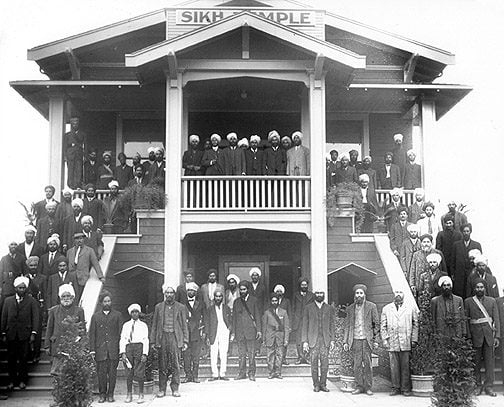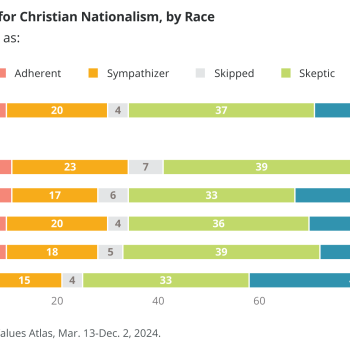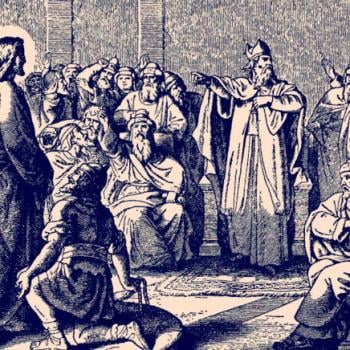In April, a month after the deadly shooting in Atlanta, eight people were gunned down in a horrific mass shooting at a Fed-Ex facility in Indianapolis. For many people in Indianapolis – including myself, a proud Hoosier and an active member of the Asian American organizing community in Indy – the incident saw the convergence of several problems: not only the ongoing scourge of gun violence, but also the problems of white supremacy and of increased racism and violence directed toward Asian Americans. (As the Indianapolis Metropolitan Police Department announced, the shooter had been known to be visiting white supremacist websites when he first attracted the attention of law enforcement in 2020.)
Half of the victims of the Fed-Ex shooting were Sikh, a group that, I quickly discovered, is little understood by the broader public, not just in Indiana, but more broadly. Moreover, Sikhs have received inadequate scholarly attention, both in Asian American studies and American religious studies. The Fed-Ex massacre, I realized, exposed the need for both fields to do a better job of incorporating Sikh perspectives in both research and teaching.
As a first step, I gathered together two Sikh scholars: Tejpaul Bainiwal, a doctoral candidate at the University of California, Riverside, and a member of the steering committee for the Sikh Studies Unit in the American Academy of Religion; and Jasleen Singh, a doctoral candidate at the University of Michigan. (Full disclosure: I am one of the members of Jasleen’s dissertation committee.)
The three of us had a conversation during which I posed a couple basic questions: What are the main things that scholars of American history and religion need to know about Sikh experiences in the United States? And how does understanding of Sikh experiences and perspectives change how we think about American religion overall?
Below are the highlights of our rich conversation. The remarks have been edited for clarity and conciseness.
On viewing American Sikh experiences through a transnational framework and through the broader lens of global Sikh history
Tejpaul Bainiwal: One thing that’s extremely important, I would say, is that Sikh experiences in the U.S. are also heavily related to Sikh experiences in Punjab and in India. Understanding Sikh history allows for a better understanding of Sikh experiences in the U.S., especially if we’re talking about intergenerational trauma…If we want to begin with 1947 and Partition and a lot of those immigrants, a lot of those individuals who experienced ’47 have then immigrated here. And then [there was] 1984 and then the farmers’ protest. All of that is something that happened outside of the U.S., but it directly connects to their experiences here because the intergenerational trauma continues…A lot of individuals were displaced multiple times throughout their life. But then [there are] also concepts of what we see in the U.S.: concepts of seva, selfless service; concepts of chardikala, eternal optimism; concepts of resilience and revolutionary spirit. All of that is connected to Sikh history. So I think to understand the experiences in the U.S., we also need to understand broader Sikh history.
On considering how American Sikh experiences have been shaped by the particular U.S. context
Jasleen Singh: I completely appreciate what Tejpaul said, and I echo that kind of transnational understanding of the Sikh way of life. However, we also need to be mindful of how it’s negotiated within the American context as a situated body that is under a specific American national secular law…Sikhs [are] continuously negotiating their identity and presence within the American secular context and secular law that is shaped by Protestant Christian understanding of what is religion [and] what is politics…Sikhs within the presence of the American law—American Protestant Christian law—have to negotiate its presence [and] its understanding of its religion in all the Sikh principles that Tejpaul highlighted. We are constantly negotiating. So I think what’s important for [Anxious Bench] readers to understand is that Sikhs cannot be seen as untransformed, untranslated bodies, that we’re constantly being translated through an American lens.
On the importance of recognizing the diversity within Sikh American communities
JS: The Sikh American experience, it’s very diverse in terms of one’s lived experience in a Sikh gendered body, in a Sikh casted body…It depends on one’s class system and also depends on one’s socioeconomic status and immigration status. So those are diverse experiences.
TB: I think that’s extremely crucial. You mentioned gender, caste, class, landownership. I think that also speaks to how we’re talking about the need to disaggregate data and disaggregate Asian Americans in general. And also there’s been a lot of data that is coming out about [how] Indian Americans are at the top of the class in every regard. But then, like Jasleen was saying, that doesn’t do justice to those who may not fit that category and then also are harmed by the model minority myth.
On Sikhs being mislabeled and translated through an American lens
TB: [Sikhs are] constantly being mislabeled throughout history, throughout American history, from when they first immigrated, being labeled as Hindu, to then being labeled as Saudi Arabian, and then being labeled as Iranians and being called Ayatollah, and then being called Muslims…It really struck me when Jasleen was saying [that] we’re constantly being translated through an American lens. It depends on whatever is happening in America, and if it connects, that label is thrown on Sikhs.
JS: We’re kind of always in a cycle of responding to [an] American translation of us. So that’s one form of experience. And I think the other form of experience is that…Sikhs are utilizing Sikh principles (like hukam, like chardikala, like seva), but oftentimes that is happening alongside the response, if that makes sense…Simultaneously [we] have to juggle [the message of], We’re not terrorists. And the way we do it is through seva…Instead of doing what we do, I think, and going through the experience of being Sikh, we are also now kind of caught up in this kind of messiness, of unraveling or unsheathing this kind of translation that we need to go through.
On the challenges of constantly being “on the defense”
TB: As Sikh Americans, we are always on the defense, but we use that as a way to educate folks—so, education through defense. When we’re talking about early Sikh immigrants or even looking at more recent history, post 9/11 America, these major organizations—Sikh Coalition, SALDEF [Sikh American Legal Defense Fund]—they were started as a response to Sikh hate crimes. And then even if we look at Oak Creek gurdwara massacre, as a response, we get the “We Are Sikhs” campaign. And then the Indianapolis shooting—as a response we are having this conversation now. [We’re] always on the defense, and that’s been the American experience…But I think there needs to be a moment where we are not always on the defense and finally break out of that understanding and kind of go on the offense and talk about Sikhs and Sikh American experiences outside of tragedy.

On the importance of including Sikh perspectives in the history of American religious freedom and racial justice
TB: I think the Sikh experience is pretty interesting. Just for a moment, if I can talk about a community that’s only been here for a little over a century, I would say it’s impacted American history and American religious experience in many different ways when we’re talking about looking at the racialization of religion.
One of the most noticeable yet misunderstood religious article of clothing is the turban. There was a study done by SALDEF back in 2013 jointly with Stanford called Turban Myths, and they come to the conclusion that the majority of individuals in the U.S. who wear a turban are Sikhs, yet they’re still misunderstood. But even going further back—like I said, [Sikhs have been] here for only a little bit over a century and [have been] challenging white supremacy, through Stockton gurdwara, which was established just mere months before the California Alien Land Law Act was passed. So then [Sikhs] actively were challenging the discriminatory legislation that was in place in California. And then Baghat Singh Thind’s challenging [laws] and his Supreme Court case…[It’s important to understand] the constant battle that Sikh Americans are going through and constantly try to educate folks and the impact that [Sikhs] have on labor laws, religious freedom in America.
On Sikh American battles for religious freedom and the challenges of a Christian-centric definition of religion in the U.S.
JS: Sikh perspectives [and] Sikh experience have a way of challenging or really questioning what is understood as religion and what is understood as religious articles or religious practices. For instance, the kirpan issue…it actually kind of exposes this kind of question of what is religious, what is understood as a generic religion, or is understood as a proper religion from a Protestant Christian understanding or even American law…
…So in the case of the kirpan issue for Sikh Americans, [the kirpan] becomes a questioning object. It becomes an object that kind of puts to question what is a proper religious article of faith and what isn’t. Is it a dagger or is it a religious article? …Sikhs have to explain or try to rearticulate the utilization of kirpan as either a religious object or as a dagger, [and it] kind of just comes to show that it is neither, or it was never really understood from that point of view. The Sikh American perspective is not something that can be neatly categorized into the two categories…
…The second thing that it kind of allows us to see is that these categories are perhaps not native to Sikh Americans or are something that’s being forced on certain communities. So I think Sikh American perspective does put a light to that, shed a light to the foreignness of these categories that perhaps don’t belong to Asian American experience…So that’s one kind of questioning or probing that the Sikh American experience can allow space for. The other thing that I feel that the Sikh American experience does is complicate the limit of the term religion itself. What is religion? What do these courts understand as a proper religion? Perhaps there is a limit to their understanding. And who are these people who are defining what religion is?
…That can be a way I feel Sikh American experience can really shift the conversation: not just about how Sikh Americans can be religious, but also, is religion really an appropriate term for Sikh Americans? Or are there ways in their politics or their religious experience that Sikh Americans are being hindered by the very terms religion imposes on them?
TB: Time and time again, we’re seeing Sikhs fighting court cases and constantly in courts, too, or hosting trainings…I think it was in Arizona where a Sikh man’s beard was trimmed against his will. So there’s been several cases of that as well, where courts don’t have an understanding of how hair is valuable for Sikhs, and not cutting or trimming their hair is something that Sikhs and the religion teaches folks to do…Then we see a lot of Sikh American organizations now putting their resources into conducting police training. I was even asked to do a police training on behalf of a Sikh org and talk to them about the turban and talk to them about the beard and talk about the kirpan as well. In the audience, the response that I got was—there were smirks, and there were comments being made about the kirpan. So they still refused. And those were [people]—not just, you know, courts—but those who are enforcing the laws. They refused to accept what is religious for Sikhs. So how are they also categorizing religion, from the general population to those who are passing law to those who are defining laws and those who are enforcing law as well?
On engaging Sikh American perspectives on their terms and outside of moments of tragedy
TB: When we talk about Sikh American orgs and who are advocating for these [changes], especially in the army and the military, all of these are done [on a] case-by-case basis. We’re not seeing any institutionalized change. So then once we restrict it to a case-by-case basis, the amount of resources and the time that is going into it, we’re ignoring all of this. But then once again, that goes into the whole aspect that we talked about earlier on: the defense and not being able to do other things that are necessary for Sikh American experiences because we’re so focused on advocating for these things that need to be done on a case-by-case basis…
…I think for far too long, we’re only reached out to in times of tragedy. But, you know, it’s time to include Sikhs and their experiences in the general conversations and the everyday conversations we’re having about American religious history, about Asian American history, and other areas that are relevant.
Want to learn more about Sikhs and Sikhism? Check out Patheos’ Library about Sikhism.













